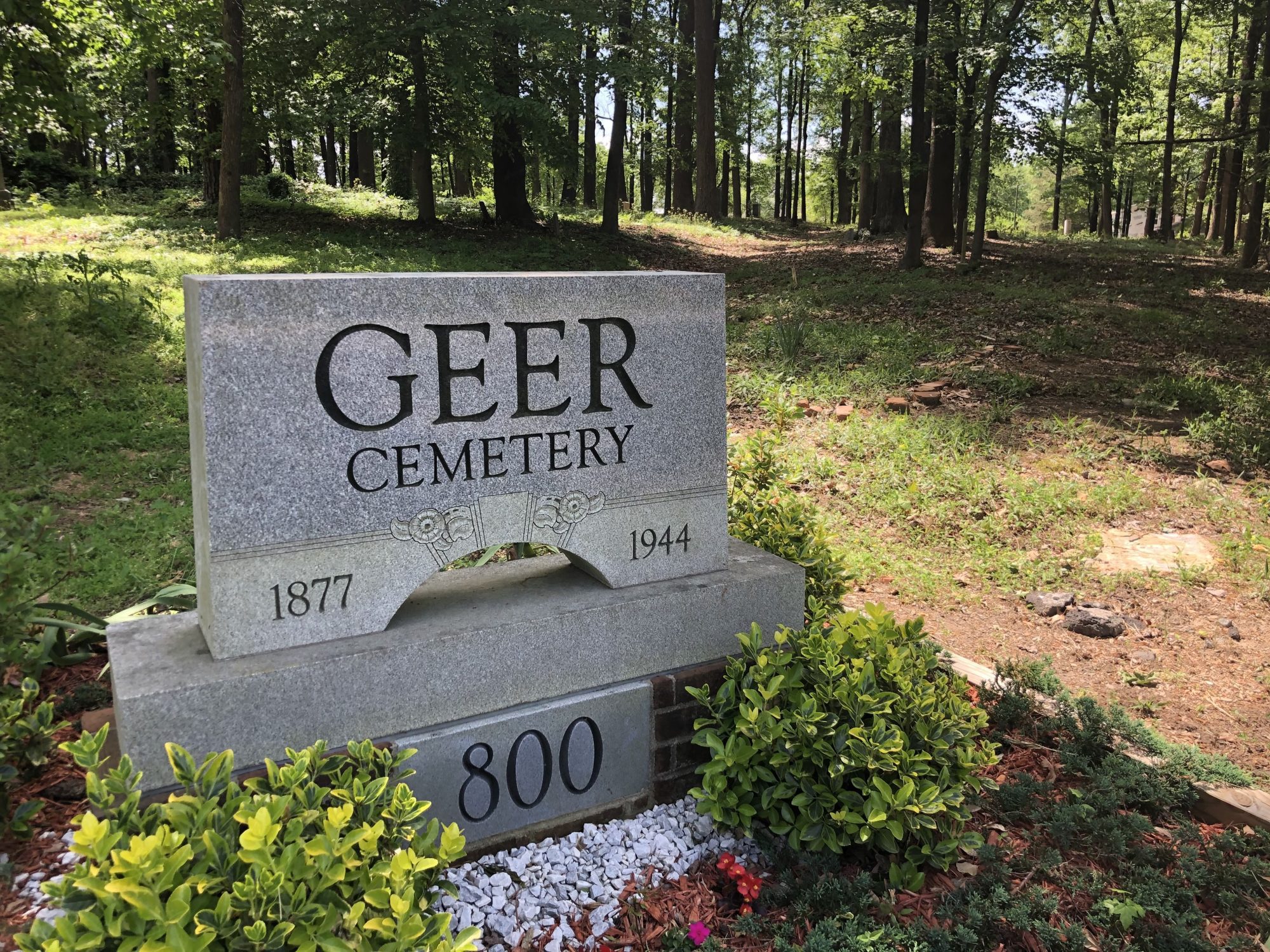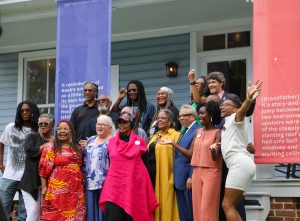Growing up, I always believed it was disrespectful to walk across graves. At Geer Cemetery, it’s impossible to avoid. Geer is one of Durham’s oldest African-American cemeteries. About four acres large, the cemetery holds more than 1,500 people, but most of the graves are unmarked—a 1992 canvas counted about 100 graves.
The first burial took place 12 years after the end of the Civil War, in 1876. An 11-year-old child died after falling from a mule or a horse while working on the Geer farm and was buried on the land. His name is lost. In 1877, according to a handwritten county deed, white farmer James B. Geer sold the land to a group of three African-American Durhamites—prior to the formation of Durham County from parts of Wake and Orange counties in 1881—so that it could be used as a cemetery for African-Americans.
The project began in 2004. Jessica Eustice, an adult basic education adjunct instructor at Piedmont Community College and Durham Tech, born and raised in Durham, chose the house she lives in now partially because its proximity to Geer Cemetery reminded her of another abandoned cemetery near where she grew up in western Durham.
“When there would be a storm blowing up in the afternoon in the summer, and the ozone is all in the air, and it’s just this moment of wind and anticipation, I would stand by the screen door and look down toward the cemetery and feel like the wind was blowing the spirits up out of it,” Eustice said. “And I always wondered about that. Maybe I was influenced by Casper the Friendly Ghost or something!”
The Friends of Geer project, website and Facebook group began as a project for course Eustice took at Duke’s Center for Documentary Studies in 2003. When Eustice and her husband first moved into the neighborhood, the cemetery, which is off Colonial Street in Duke Park, was nearly impassable.
“Back in those days there was all this wisteria all over the place and poison ivy,” she said. “I mean, it was just like a jungle. It was really a jungle in there.”
The names in the cemetery are those of Durham’s oldest and most prominent families: Mangums and Markhams and the Geers, all three of which can also be found in Durham’s Maplewood Cemetery. One of the most well-known burials at Geer is Edian D. Markham, who founded St. Joseph’s AME Church in Durham and organized Durham’s Hayti district.
Through the cemetery there’s a pine needle path where the poison oak and English ivy have been mostly cut back. It’s covered, partly, in grainy yellow Chapel Hill gravel—part of an Eagle Scout’s project last year, Eustice said. He also added two small benches along the path.

“So now it’s almost a park,” she said. “Not quite, but it could be one day. Like a memorial park where people could go and sit and get some fresh air and visit with the ancestors.”
Today, certain sections of the cemetery are still inaccessible if you aren’t willing to risk poison ivy and oak, but progress has been made. New solid marble markers label the three different parts of the cemetery. Piles of tree branches sit waiting to be collected. Someone has left real flowers on an overturned grave. Most of the gravestones, if they have any epitaph at all, read “at rest.” One reads “Just sleeping.” Massive oak and maple trees shade almost all the graves in Geer Cemetery.
A stark contrast is just a few minutes to the west, the sunny, 120-acre Maplewood Cemetery. Most graves here are carefully marked with a massive headstone and footstone, some with towering obelisks and elaborate mausoleums, including those of the Duke family and the Mangums. Peppered intentionally with Cypress and magnolia trees, the paths are paved. All of the grass is freshly mown. An ostentatious memorial to Julian Carr and his family greets visitors. The City of Durham established Maplewood cemetery in 1872, only four years before the founding of Geer Cemetery, and most of the graves in the historic section of Maplewood date to around the same time.
On the day that I visit Maplewood, city of Durham workers are cutting down damaged trees and hauling them away. The city only operates two cemeteries: Maplewood and Beechwood. Beechwood is a historically African-American cemetery where many prominent city residents are interred, including the founder of North Carolina Central University, James Shephard. Beechwood opened to replace Geer Cemetery in 1924, though the last burial at Geer occurred in 1944. Some graves were moved from Geer to Beechwood at that time. As of now, nobody owns Geer, but Eustice thinks the city should take responsibility.
“I know the city is relatively uninterested in their cemeteries,” Eustice said. “But yeah, I think the state law specifies that if a cemetery is abandoned, the city in which it’s abandoned should take it over. The cemetery is full of sunken graves, and of course, people walking in there could fall in the grave and be injured. There is nobody that’s gonna be responsible for that, so the city should be, they should do something either to prevent that from happening or to take responsibility if it does.”
The city is empowered to take responsibility for abandoned cemeteries by N.C. General Statute 160A-344, but the law doesn’t say that it must—only that it may assume control of a cemetery “the trustees or owners named in the deed or deeds for the property have died, or are unknown.” The Durham Cemeteries Management department did not respond to requests for comment.
Eustice has ceded some of the reins of Friends of Geer to Debra Taylor Gonzalez-Garcia, who has taken steps to contact descendants of the people buried at Geer Cemetery, repairing some fallen headstones, and showing people how to clean the headstones so they aren’t damaged.
“She’s really getting things going, and the relatives are responding in really positive ways. So I think there’s a lot more energy around the whole preservation project of Friends of Geer than there ever has been before,” Eustice said.
Though Eustice isn’t Christian, she said the historical value of the cemetery and its spiritual significance to others, is what motivated her work on Geer Cemetery over the last 15 years.
“Southern history has a lot of influence on my life and my thinking, and so just the fact that the cemetery was all but abandoned, is really a very big contrast between Geer [and Maplewood],” Eustice said. “It was such a concrete representation of the erasure of African-Americans in American history. And so my whole interest in it is it’s a concrete way of teaching American history.”
Photo at top by Frances Beroset.






Comments are closed.